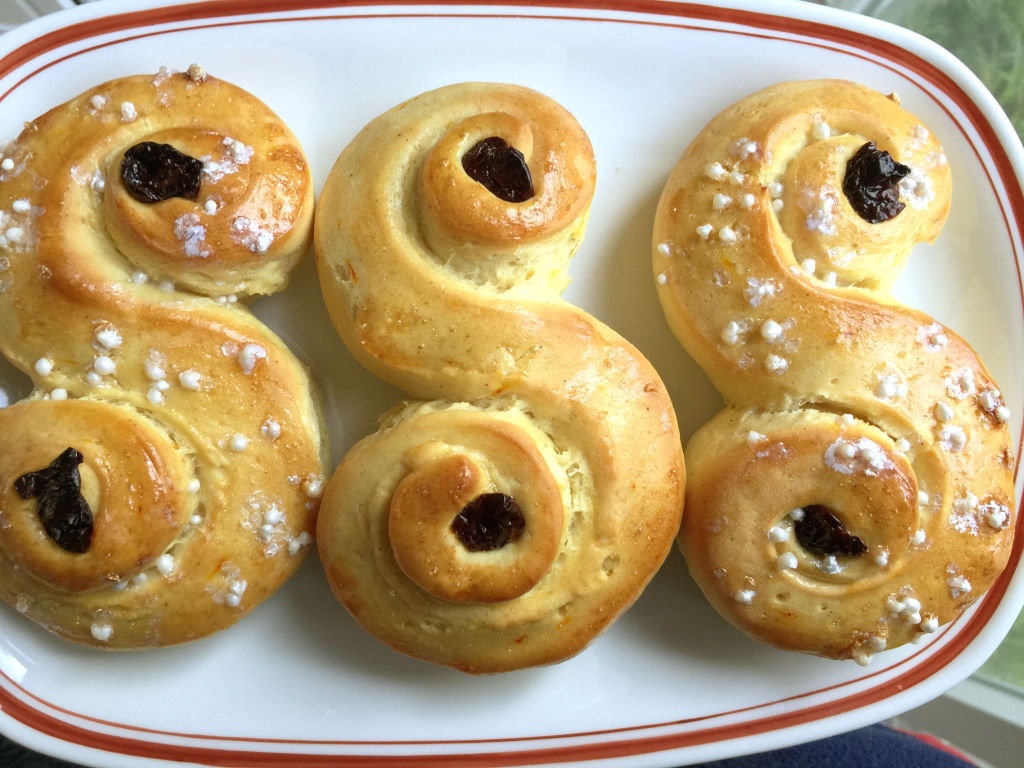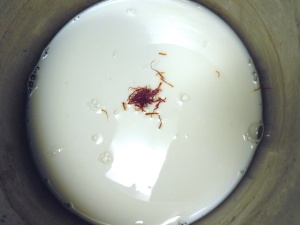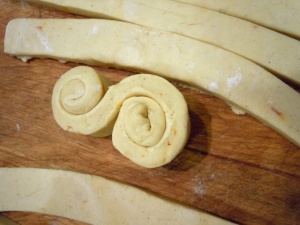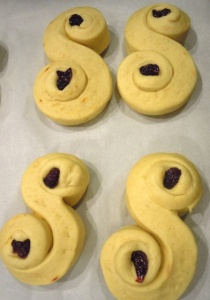
[I]’m not the only soul who feels light-deprived this time of year. Though I love the wee hours of the morning when I’m in the dark, pondering, and feeling as though I have the world to myself, I still find every December to be a race against the dark, from which I grow weary. Daylight hours of productivity seem cut in half, and the nights, seemingly endless, are also sometimes oddly sleepless.
 It has been a recurrent phenomenon in Winter Solstice history. So much so, that Scandinavian and many other cultures celebrate St. Lucia or St. Lucy’s Day, the Festival of Light, on Dec. 13 to honor Saint Lucia, bearer of the light and the patron saint of the blind, and to illuminate what had long been considered the darkest day of the year.
It has been a recurrent phenomenon in Winter Solstice history. So much so, that Scandinavian and many other cultures celebrate St. Lucia or St. Lucy’s Day, the Festival of Light, on Dec. 13 to honor Saint Lucia, bearer of the light and the patron saint of the blind, and to illuminate what had long been considered the darkest day of the year.
On this day, the candles are aplenty, including those that form a crown worn by the oldest daughter in the family, who serves coffee and saffron-enhanced rolls — St. Lucia Buns — as a part of the festivities.
 I was intrigued by these buns, (also known as Lussekatter), made golden yellow by the exotic (and expensive) saffron and spiraled into an “S†shape. I wanted to make them, as they seemed one of the more unusual yet seasonally festive breads I have tried. So I splurged on the saffron (if you have ever priced it, you will realize why you have never had it), the dried delicate threads from the stamens of crocus flowers, and vowed to use it all — in the rolls, as well as rice and however far what I had purchased would take me.
I was intrigued by these buns, (also known as Lussekatter), made golden yellow by the exotic (and expensive) saffron and spiraled into an “S†shape. I wanted to make them, as they seemed one of the more unusual yet seasonally festive breads I have tried. So I splurged on the saffron (if you have ever priced it, you will realize why you have never had it), the dried delicate threads from the stamens of crocus flowers, and vowed to use it all — in the rolls, as well as rice and however far what I had purchased would take me.
 Appropriately, it was dark when I started the rolls and dark when I finished them. I began the dough, infusing the milk with the saffron and forming the egg-and-butter-yeast dough in the evening (I let it do its initial rising, then refrigerated it), then finished the rolls in bleary hours the following morning. My basic recipe came from one website, my process of forming the rolls from another, and the addition of the decoration of the pearl sugar came from yet another website.
Appropriately, it was dark when I started the rolls and dark when I finished them. I began the dough, infusing the milk with the saffron and forming the egg-and-butter-yeast dough in the evening (I let it do its initial rising, then refrigerated it), then finished the rolls in bleary hours the following morning. My basic recipe came from one website, my process of forming the rolls from another, and the addition of the decoration of the pearl sugar came from yet another website.
I rolled the golden dough out and formed strips that I rolled halfway up on either side, to form the “S.†These buns were given a short raising time, then decorated before baking. Many recipes suggest using golden raisins to press in the center of each spiral to form “eyes,†but not being a  fan of a golden raisins, I used dried cherries (given my state, red eyes seemed to fit). A brush of beaten egg, then some pearl sugar over some of the buns.
fan of a golden raisins, I used dried cherries (given my state, red eyes seemed to fit). A brush of beaten egg, then some pearl sugar over some of the buns.
I have to say (and I’m not bragging here…I just followed a recipe), these buns baked up into some of the most beautiful-looking creatures I’ve seen! They warmed the kitchen with their buttery aroma and brightened the morning with their golden light. They were airy and tender; the flavor, not very sweet and tinged with that pungent saffron, tasting of something passed down through time, like a lit candle flame igniting another. Saffron, from a spring flower. The buns, made even more delicious with a smattering of butter and a sip of coffee, a delicate burst of sweetness from the cherry “eyes.†Savoring this rare treat, I looked inward, and forward, to the dark days and nights ahead and the light that was just behind them.
St. Lucia Saffron Buns
Adapted from www.simplyrecipes.com
Makes about 12 buns
3/4 cup milk
1/2 teaspoon saffron threads
1 teaspoon plus 1/4 cup granulated sugar
One 1/4-ounce packet active dry yeast
3 1/2 to 4 cups all purpose flour
1/2 teaspoon kosher salt
The seeds from 3 cardamom pods, ground (optional)
1/4 cup (1/2 stick, 4 Tbsp) unsalted butter, softened
1/4 cup of sour cream
2 large eggs
Raisins
Glaze
1 egg, beaten
In a small pot, heat the milk, saffron, and 1 teaspoon of sugar together until the milk is steamy. Remove from heat and stir to dissolve the sugar. Let cool until about 115°F, or warm to the touch, but not hot.
Sprinkle the yeast over the warm saffron-infused milk and let sit for 5 to 10 minutes until foamy.
In the bowl of a stand-up mixer* whisk together 3 1/2cups (490 g) of the flour, remaining 1/4 cup of sugar, salt and ground cardamom if using.
*You can make this recipe without a mixer, for me it’s just a bit easier with one.
Make a well in the center of the flour and add the yeast milk saffron mixture, the eggs, the butter, and the sour cream. Mix the ingredients until well incorporated.
Switch to the dough hook of your mixer (if using, otherwise knead by hand). On low speed start to knead the dough. Slowly add additional flour, a tablespoon at a time, kneading to incorporate after each addition. Do this until the dough is still a little sticky to the touch, but does not completely stick to your hands when you handle it.
Shape the dough into a ball and place in a large bowl. Cover with plastic wrap. (Note at this point you can make ahead and refrigerate overnight if you wish.) Let sit in a warm place for 1 to 2 hours, until the dough has doubled in size. (One way to tell that the dough is ready is that you poke your finger in it and it takes quite a bit of time for the indentation left by your finger to go away.)
When the dough has doubled in size, gently press it down and knead it a couple of times. Break off a piece and form it into a ball about 2 inches wide (60 to 70 grams if you are weighing). Roll the ball out into a snake, about 14 inches long. Then curl the ends in opposite directions, forming an “S” with spirals at each end. Place on a lined baking sheet and repeat with the rest of the dough. Cover with plastic wrap and place in a warm spot until the dough shapes double in size, 30 minutes to an hour.
Preheat oven to 400°F. Using a pastry brush, brush some beaten egg over the tops and sides of the uncooked buns. Place raisins in the centers of the “S” spirals. Place in the oven and cook for about 10 to 11 minutes (turning halfway through cooking to ensure even browning), until the buns are golden brown.  Remove from oven and let cool for 5 minutes before eating.
Blogger’s note: I did not use cardamom in this recipe, but did add a dash of cinnamon to the dry ingredients. I rolled the dough out to form the “S†shapes out of flat strips. I did decorate the tops of the unbaked buns with some pearl sugar. I baked these at 375 degrees, rather than 400, for about 16 minutes.
